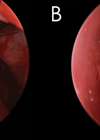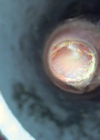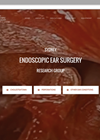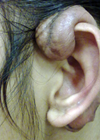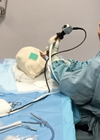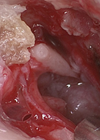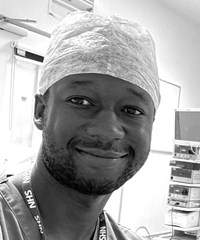ENT features archive for 2016
Timing of surgery in chronic rhinosinusitis: does it matter?
While many patients with chronic rhinosinusitis respond to medical treatment, some do not. The next step for these patients is surgery, but how soon should this be offered? Sooner rather than later seems to be the answer, as Claire Hopkins...
The common frontal sinusotomy (Lothrop) and chronic rhinosinusitis
As our understanding of the pathophysiology of CRS evolves, so do our treatment strategies. It is accepted that in many cases, the main role of surgery is to allow better penetration of topical therapies to the sinus cavities. What, then,...
Recalcitrant chronic rhinosinusitis: What to do next?
Whilst the majority of patients with chronic rhinosinusitis (CRS) will significantly improve with treatment, we are sometimes left with a ‘hard-core’ of nasal cripples who fail to improve despite our best efforts. How can we deal with these patients? Valerie...
Facial pain: the differential diagnosis in an ENT clinic
The patient presenting with facial pain can be a heartsink. Fear not – Bhaskar Ram and Sangeeta Maini are here with a succinct overview of the common non-sinogenic causes of facial pain and headache, and how to manage them. Facial...
General overview of endoscopic ear surgery: advantages and principles
The philosophy of endoscopic ear surgery presents surgeons with a tricky concept – does the magnificent view make up for the fact I need to operate with one hand? In this article, Jane Lea discusses the advantages of operating transcanal...
Staying safe during endoscopic ear surgery
There is growing interest in using rigid endoscopes rather than traditional operative microscopes to perform transcanal middle ear surgery. Rigid endoscopy provides a high resolution, wide-angle view of the tympanic cavity through minimally invasive surgical portals. In this article, Elliott...
Video otology tutorials: how EES changes the game
High definition endoscopic ear surgery (EES) redefines traditional middle ear anatomical perspectives. The surgeon can observe in situ anatomical relationships with angled objectives in a way that the traditional microscopic view, with step-wise removal of structures is unable to achieve....
Endoscopic ear surgery in children
The benefits of endoscopes in otologic surgery, which have become increasingly widely appreciated in recent years, are very well suited to the management of paediatric middle ear disease. Although one might imagine that the smaller ear canal of a child...
TWJ Fellowship – Toronto 2015: Endoscopic Ear Surgery
The Thomas Wickham Jones (TWJ) Foundation is a charitable trust with the aim of helping patients with deafness overcome their disability. Striving to achieve this goal they provide educational grants to otolaryngologists and other related audiological professionals working within the...
Endoscopic middle ear surgery for cholesteatoma treatment
A critical question when any new technique is proposed is ‘does it work?’ In this article Daniele Marchioni and Davide Soloperto discuss the success rates of endoscopic ear surgery for cholesteatoma. Introduction Surgical management of cholesteatoma is still a controversial...
What’s in a name?
Kate Granger is a doctor and the founder of the #hellomynameis campaign; she is also a cancer patient. In this article she explains why she started the campaign, and why patient-centred care starts with an introduction. Chris and me the...
International Federation of Head and Neck Oncologic Societies (IFHNOS): its programmes and impact on head and neck cancer worldwide
In the first article of this edition, we introduce IFHNOS, which has created a major impact on the landscape of head and neck cancer treatment and education over the past quarter of a century by offering a global platform amongst...



